What Works For My Business?
I have enjoyed a wonderful career in marketing that spans the old world, known as Traditional Marketing, to the new age, known as Digital Marketing. Almost four decades of work across both of these marketing categories.
Now many of you may read that statement and deduce one thing: I’m old.
While that may be true, I’ve benefited from working across a career in marketing that has evolved from strictly traditional marketing methods to today’s digital marketing landscape.
I’ve enjoyed creating TV and radio spots, disruptive direct mail pieces, traffic generating FSI’s (Sunday Coupon Inserts), promotions and major events for brands like McDonalds’s and Coca-Cola to regional banks, restaurant chains and other clients. I’ve more recently enjoyed working with clients in the B2B and B2C space, creating digital strategies and executions that grow their business.
As President of Brand IQ, I am able to reflect upon both of these marketing disciplines and determine how best to integrate them for the benefit of our clients.
Over the past few years I’ve read many blogs and articles that have a strong slant toward digital marketing. It may come as no surprise they were produced by a wide variety of companies in the digital marketing space. This continues to be the shiny new toy of the marketing industry, and for a variety of reasons, has been a huge growth engine for businesses.
However, as with Mark Twain’s famous statement “My death has been greatly exaggerated” so too have been the pronouncements of the end of traditional marketing.
Well, I am here to tell you that is not the case. Traditional marketing isn’t dead. In fact it is alive and well.
In October, Apple spent $19.9 million on television commercials advertising its new Apple TV Plus and then $36.6 million on television commercials to advertise the new IPhones. In digital they spent $1.7 and $2.3 million respectively against these two initiatives.
Amazon spent $434.8 million on TV ads through July 15 of this year, creating 24.9 billion consumer impressions.
Millions of dollars continue to be spent in traditional marketing.
Millions of dollars also are being spent in digital marketing and growing every year.
So where does that leave us with our clients. Should we be focused on delivering their message through traditional marketing or digital marketing channels.
In order to arrive at a good decision, let’s first review what each of these two marketing categories encompass.
TRADITIONAL MARKETING
Traditional marketing is a type of marketing that is hard to ignore and includes the traditional ads we encounter on a daily basis. Traditional marketing is commonly defined by these five categories:
- Print (magazines, newspapers,)
- Broadcast (Television and radio)
- Direct Mail (catalogues, postcards, brochures)
- Outdoor (billboards, Transit, Airport)
- Telephone (telemarketing, sms marketing)
Traditional marketing is not only one of the oldest forms of marketing, but also one of the most researched. Marketers lean towards this method because it’s tried and true. Everyone encounters some sort of traditional marketing in their everyday lives, whether it’s viewing a TV spot, listening to a radio ad, getting something in the mail or in your daily newspaper.
Traditional marketing plays an important role in reaching local audiences. Ads can be fixed in place for a long period of time. Additionally, there’s an audience who’s easier to reach through traditional marketing than online marketing.
If traditional marketing didn’t get results, companies wouldn’t pay $5 million for a 30-second Super Bowl ad. According to Thinkbox, TV reaches approximately 70% of a country’s population a day, 90% in a week, and nearly everyone in a month. Bizo and Epsilon data found that direct mail achieves a 4.4% success rate, compared to 0.12% for email. It would appear that traditional marketing is still a strong choice for marketers.
DIGITAL MARKETING
I believe most of us are very familiar with what digital marketing is on some level. Digital marketing encompasses all marketing efforts that use an electronic device or the internet. Businesses leverage digital channels such as search engines, social media, email and other websites to connect with current and prospective customers.
Digital Marketing encompasses a wide span of areas and activities but here are a few to note:
SEO/Content Marketing/Social Media Marketing/Pay Per Click/ Affiliate Marketing/Native Advertising/Marketing Automation/Email Marketing/Online PR/Inbound Marketing/Remarketing
In the past decade, digital marketing has exploded in popularity, as a result of the mass adoption of smartphones and the sharp increase in daily screen time. Digital marketing has become wildly popular due to the cultural, technological, and societal shifts around us.
WHAT ARE THE TRENDS IN EACH CATEGORY
Let’s take a look at the numbers.
In 2018, the spending among each category was:
Traditional Marketing $ 114.84 billion
Digital Marketing $ 108.64 billion
2018 Distribution of Advertising Spending
Mobile 33.9%
TV 31.6%
Desktop/laptop 14.6%
Print 9.1%
Radio 6.5%
Out of Home 3.6%
As you can see, there is a fairly even split in spending between traditional marketing and digital marketing. Of course if you look at the past decade the numbers would demonstrate year over year growth for digital while traditional has slowed.
If you dig deeper into the category you will note a number of factors impacting spending in both traditional and digital.
When you look at TV ad spending, it will decline 2.2 percent to $70.83 billion this year, largely because there are no elections or big events, such as the Olympics or World Cup. The presidential election next year will propel TV ad spending back into positive growth, before falling again in the following years. TV ad spending however remains a significant amount of company’s total advertising expenditures.
It’s expected that US digital ad spending will reach $129.34 billion in 2019, accounting for 54.2% of total media ad spending. An accelerated decline in traditional media advertising, particularly TV, has led digital to overtake traditional slightly earlier than was previously predicted.
Video will continue to be the major driver of growth, especially on social media. Twitter is one platform that has particularly benefitted from video advertising, with its total ad revenues returning to growth in 2018. Spending on OTT platforms like Hulu and Roku will also boost digital video ad spending this year.
This year will be the first time that Google and Facebook’s combined share of the digital ad market will drop. That said, they will remain the largest digital ad sellers in the country, making up nearly 60% of digital ad spending in 2019, or $76.57 billion.
Amazon’s ad business is growing faster than most expected. In 2019, advertisers will spend $11.33 billion using Amazon’s platform; not as much as on either Google or Facebook, but enough to start making a small dent in the duopoly.
One other area of traditional marketing has been event marketing which should not be forgotten. Event marketing and local marketing have advantages over digital in specific occasions. According to Bizzabo, 41% of marketers believe that events are the single most effective channel over digital advertising, email, and content marketing. Event marketing can be a formidable tactic in B2B where 68% of B2B marketers use events for lead generation initiatives.
INTEGRATION IS THE KEY TO SUCCESS
Traditional marketing methods and digital marketing efforts should not be viewed as separate activities. The two do not operate in exclusion from each other.
There are many marketing agencies that are narrow in focus and only provide services in the digital area. In some cases, it works well because they are so specialized and provide a level of service that others cannot.
Rather than taking an all or nothing approach, it is important to focus on a multi-channel approach that leverages the unique benefits of both. Don’t think of it as a binary choice. Successful marketers are combining both traditional and digital marketing into their planning to amplify their results. Every business is different and every marketing plan should be as well. The critical work of planning is the key to building a marketing plan with the proper balance of traditional marketing and digital marketing. Marketing agencies that understand and can leverage both of these areas will certainly become a valuable asset for their clients.


Are you ready to take your brand to the next level?